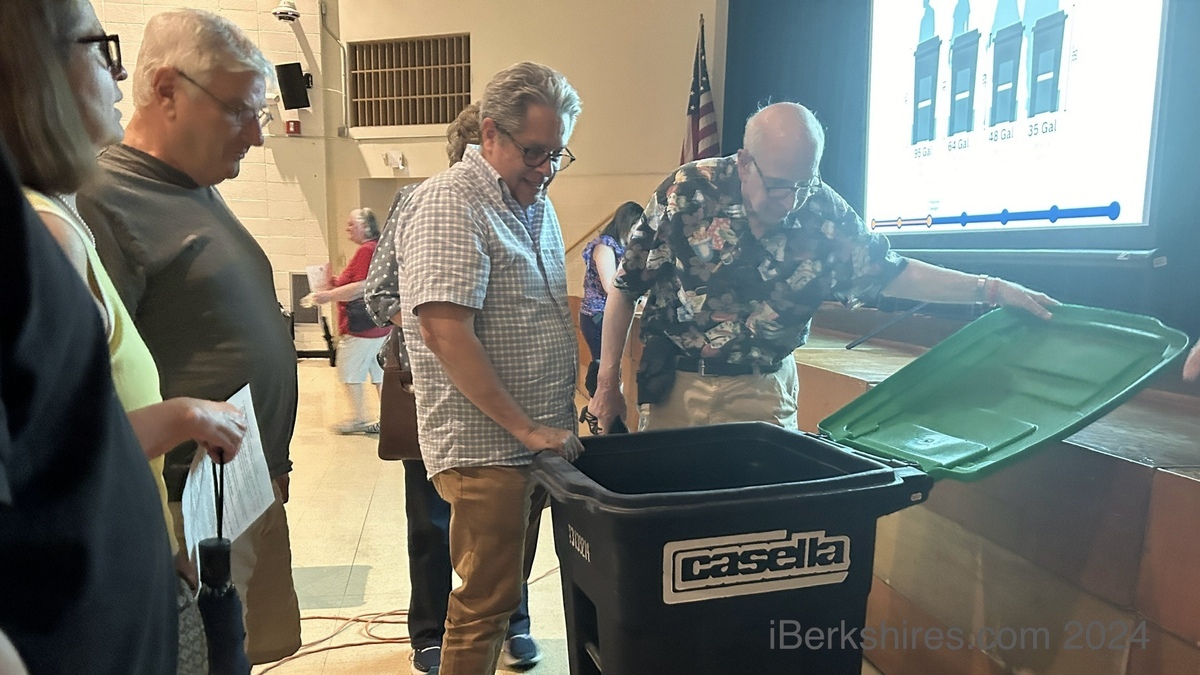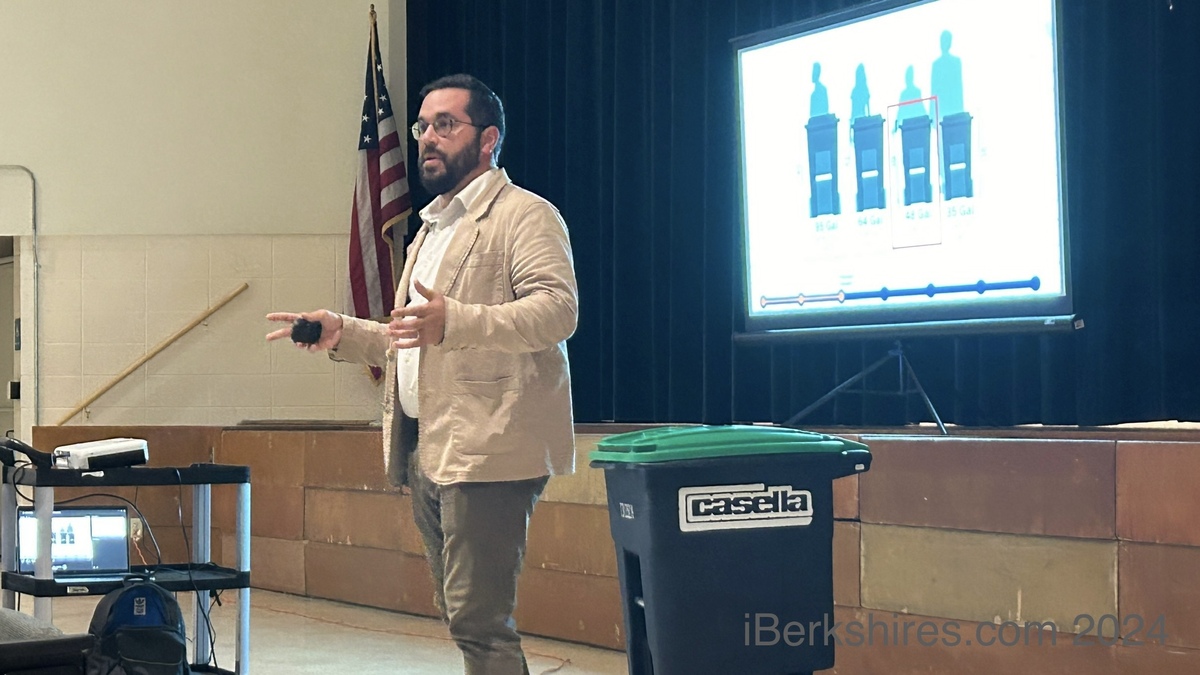
Pittsfield Residents Share Positive, Negative Feedback at Final Trash Hearing

PITTSFIELD, Mass. — Some say the city's new toter trash proposal will be more aesthetically pleasing while others are concerned that their street doesn't have the space for automated collection.
The last of three hearings for the upcoming contract with Casella Waste Management for trash and recyclables was held at Herberg Middle School on Tuesday. On the table is a move to automated pickup utilizing 48-gallon toters, which would be at no cost to residents unless they require additional toters and that would save the city $80,000 per year.
Appleton Avenue resident Dottie McGurn raised concerns about the system on her steep, crowded street with multifamily homes where many residents park in the road.
"Appleton Avenue, even in the winter time, they don't make people move their cars," she said.
"And our garbage right now is put on the sidewalk with all the cars parked in front of them so my concern is how are we going to get that machine to come up over the top of all those parked cars and pick up the trash on the sidewalk or are we going to enforce the no parking laws?"
Commissioner of Public Services and Utilities Ricardo Morales explained that the toters should be against the curb, on the edge of the road, or on the grass strip three feet away from any objects including the other bin.
"The same people that park their vehicles there need to deal with the garbage and they need to put it somewhere around away from their vehicles," he said.
McGurn asserted that from 140 Appleton Ave. to Dawes Avenue, cars are parked back to back on the street and there is no room to put trash near the road.
"What I'm going to say is that in specific cases like Appleton Ave, it might be a good idea to sit down with the Casella to discuss where they can be safely picked up," Morales said, explaining that automated services happen everywhere and there is undoubtedly a solution.
The goal is to execute a contract by July 1 with the new system fully implemented by October but the contract needs approval from the City Council first.
Morales said if the city wants to keep a fiscally responsible budget, trash removal in Pittsfield needs to change. Trash pickup for fiscal year 2025 is around $5.1 million and has doubled since the early 2000s.
"We currently are not able to manage our trash and recyclables in a sustainable way," he said. "The industry is changing. The way we deal with recyclables is changing."
The proposal aims to reduce each household's waste to 1,370 pounds annually.
Every household would receive two toters at no cost, one for trash and one for recycling. Apartment buildings up to four units will receive a set of toters per unit and those who would like additional trash toters can pay about $40 quarterly.
Toters would need to be placed at the curb at 7 a.m. on collection day, which varies throughout the city. If the bin is overflowing and the lid cannot close or bags are placed outside of the bin, it won't be picked up.
The draft agreement includes residential drop-off at the facility on Hubbard Ave.
There was a mixture of positive and negative commentary during the presentation, with one resident thanking the city for bringing forward the "right proposal at the right time."
A McKinley Terrace resident likes the idea though she did recognize that the 48-gallon recycling toter may be a little ambitious, recognizing that her family could fill it but they are an exception.
"I'm not worrying about the wind whipping away my recycling, I'm not going to worry as much about bins tipping over, and it looks better in a community," she said.
"And I think Pittsfield needs a little more pride in how it looks."
Another resident expressed concerns about the size of the containers, saying her household uses a 20-gallon trash bin and one of the small blue recycling containers per week. She said with this larger-sized toter, people will be tempted to put trash and recyclables into one so they don't have to carry two to the curb.
"I don't know how many other people might be in this situation but I would look at that photo and say, 'You know what, I'm going to put my trash in there and my recycles in there and I'm going to call it a day,'" she said.
"I don't know if you've accounted for that. I know that's not what you want the program to do."
Morales said going anywhere under is not a possibility and that it would "certainly" hurt the city's goals.
A concern was brought forward about trash fitting into the toters during the holidays, which the commissioner said would be a good time to utilize the residential drop-off at the transfer station or the household could request a second bin for a few months.
"The transfer station being, in my opinion, the preferred way when you only generate, on occasion, more than what fits," he said.
Earlier this month, the administration also held community meetings at the Ralph J. Froio Senior Center and Conte Community School.
Tags: trash,















